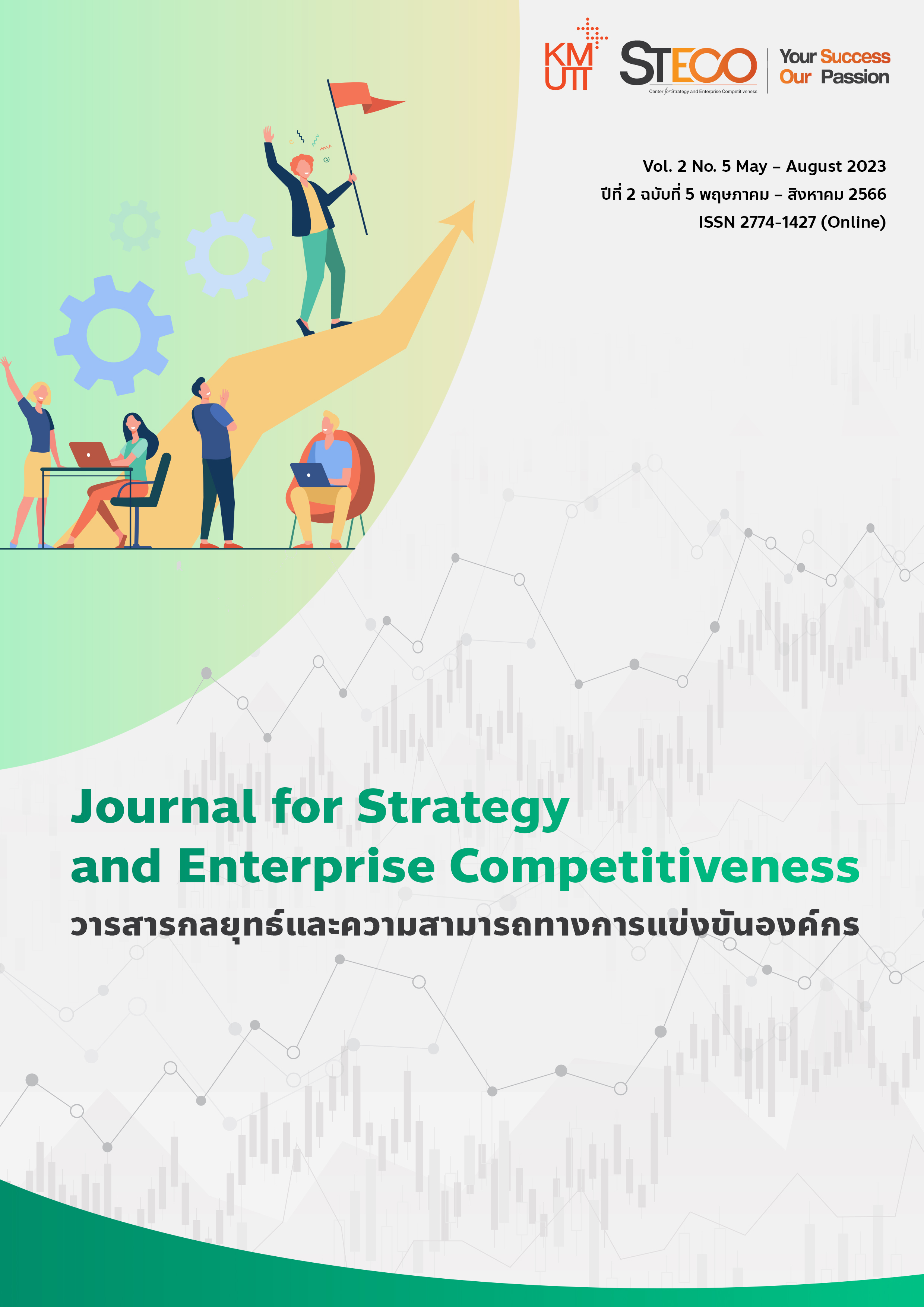กฎหมายป้องกันการผูกขาดทางการค้าสหรัฐอเมริกาในมุมมองด้านอุตสาหกรรมกีฬา
คำสำคัญ:
กฎหมายป้องกันการผูกขาดทางการค้า, การแข่งขันทางการค้า, สหรัฐอเมริกา, มุมมอง, อุตสาหกรรมกีฬาบทคัดย่อ
เป้าหมายของกฎหมายป้องกันการผูกขาดทางการค้าก็เพื่อจำกัดการใช้อำนาจเหนือตลาดของบริษัทขนาดใหญ่และภาคอุตสาหกรรมที่มาแข่งขันในตลาดไม่ให้มีพฤติกรรมผูกขาดทางการค้า ผ่านการส่งเสริมสนับสนุนให้มีการแข่งขันทางการค้าที่เป็นธรรมและมีบทบัญญัติสำหรับคุ้มครองผู้บริโภค ในสหรัฐอเมริกากฎหมายป้องกันการผูกขาดทางการค้าเป็นกฎหมายที่ใช้จำกัดการแสดงพฤติกรรมแข่งขันทางการค้าที่ไม่เป็นธรรม สร้างความมั่นใจว่าผู้ประกอบธุรกิจรายหนึ่งรายใดหรือกลุ่มหนึ่งกลุ่มใดจะไม่แสดงพฤติกรรมจำกัดการแข่งขันในท้องตลาดอย่างไม่สมเหตุผล ด้วยการช่วงชิงให้ได้มาหรือการรักษาอำนาจผูกขาดตลาดเอาไว้แก่ตนหรือกลุ่มของตน บทบัญญัติของสหรัฐอเมริกาเช่นว่านี้ห้ามการปฏิบัติในธุรกิจที่ไม่เป็นธรรมในลักษณะที่ให้ข้อมูลไม่ตรงกับความเป็นจริงหรือเอารัดเอาเปรียบผู้บริโภคในตลาดที่มีการแข่งขันยุคใหม่ อย่างไรก็ดี หลักเกณฑ์ว่าด้วยกิจกรรมและการแข่งขันในกีฬาสากล รวมทั้งการใช้อำนาจบริหารปกครองกีฬาและคำวินิจฉัยขององค์กรวินิจฉัยข้อพิพาทภายในลีกกีฬาในสหรัฐอเมริกา (การรวมตัวกันของทีมกีฬาในสหรัฐอเมริกา) มักได้รับการยกเว้นไม่ให้ถือเป็นหลักเกณฑ์หรือพฤติกรรมผูกขาดทางการค้าหรือพยายามที่จะผูกขาดทางการค้าในกฎหมายป้องกันการผูกขาดทางการค้าสหรัฐอเมริกา บทความฉบับนี้มุ่งวิเคราะห์รูปแบบทางธุรกิจของลีกกีฬาอาชีพในสหรัฐอเมริกา บทความฉบับนี้ยังอธิบายว่าเหตุใดจึงต้องมีการควบคุมการควบรวมกิจการและการปฏิบัติทางธุรกิจที่ไม่เป็นธรรมในลักษณะที่เป็นการลดการแข่งขันในตลาดธุรกิจอุตสาหกรรมกีฬา ตลอดจนกล่าวถึงอุปสรรคในการปรับใช้กฎหมายป้องกันการผูกขาดทางการค้าสหรัฐอเมริกาสำหรับป้องกันพฤติกรรมผูกขาดทางการค้าในธุรกิจกีฬาสหรัฐอเมริกา บทความฉบับนี้กล่าวโดยสรุปว่าผู้ประกอบธุรกิจการค้าในอุตสาหกรรมกีฬาสหรัฐอเมริกาจะได้ประโยชน์จากกฎหมายป้องกันการผูกขาดทางการค้าสหรัฐอเมริกาอย่างไร
เอกสารอ้างอิง
Braver, A. F. (1996). Baseball or Besoburo: Tie Implications of Antitrust Law on Baseball in America and Japan. New York Law School Journal of International and Comparative Law, 67(3), 421-454.
Blair, D. R. and Wang, W. (2020). Rethinking Major League Baseball’s Antitrust Exemption. Journal of Legal Aspects of Sport, 30(1), 18–40.
Che, X. G. and Humphreys, B. R. (2015). Competition Between Sports Leagues: Theory and Evidence on Rival League Formation in North America. Review of Industrial Organization, 46(2), 127–143.
Cyrenne, P. (2009). Modelling Professional Sports Leagues: An Industrial Organization Approach. Review of Industrial Organization, 34(3), 193–215.
Devlin, J. A. and Jacobs, M. (2011). Joint-Venture Analysis after American Needle. Journal of Competition Law & Economics, 7(3), 543–572.
Farzin, L. (2015). On the Antitrust Exemption for Professional Sports in the United States and Europe. Jeffrey S. Moorad Sports Law Journal, 22(1), 75–108.
Federal Trade Commission. (2023). The Antitrust Laws. Retrieved from https://www.ftc.gov/advice-guidance/competition-guidance/guide-antitrust-laws/antitrust-laws
Grow, N. (2012). In Defense of Baseball’s Antitrust Exemption. American Business Law Journal, 49(2), 211–273.
Grow, N. (2014). Baseball on trial: The origin of baseball's antitrust exemption. Urbana, IL: University of Illinois Press.
Grow, N. (2015). Regulating professional sports leagues. Washington and Lee Law Review, 72(2), 573–652.
Heintel, R. C. (1996). The Need for an Alternative to Antitrust Regulation of the National Football League. Case Western Reserve Law Review, 46(4), 1033–1069.
Jacobs, M. S. (1991). Professional sports leagues, antitrust, and the single-entity theory: A defense of the status quo. Indiana Law Journal, 61(1), 25–58.
McCann, M. A. (2017). The Oxford handbook of American sports law. New York: Oxford University Press.
Robinson, W. C. (1957). Professional Sports and the Antitrust Laws. The Southwestern Social Science Quarterly, 38(2), 133–141. http://www.jstor.org/stable/42866091
Rosenbaum, N. T. (1987). The antitrust implications of professional sports leagues revisited: emerging trends in the modern era. University of Miami Law Review, 41(4), 729–822.
Ross, F. S. (1990). An Antitrust Analysis of Sports League Contracts with Cable Networks. Emory Law Journal, 39(1), 463–497.
Ross, F. S. (2001). Antitrust Options to Redress Anticompetitive Restraints and Monopolistic Practices by Professional Sports Leagues. Case Western Reserve Law Review, 52(1), 133–171.
Ross, F. S. and Szymanski, S. (2006). Antitrust and Inefficient Joint Ventures: Why Sports Leagues Should Look More Like McDonald's and Less Like the United Nations. Marquette Sports Law Review, 16(2), 213–259.
Scalzo, G. (2014). Major League Baseball’s Antitrust Exemption and the Impact of the Curt Flood Act (Doctoral dissertation, Liberty University, Virginia, United States). Retrieved from https://digitalcommons.liberty.edu/cgi/viewcontent.cgi?article=1473&context=honors
Shropshire, L. K. (1990). Thoughts on International Professional Sports Leagues and the Application of United States Antitrust Laws. Denver Law Review, 67(2), 193–212.
Surdam, D. G. (2015). The big leagues go to Washington: Congress and sports antitrust, 1951-1989. Urbana, IL: University of Illinois Press.

ดาวน์โหลด
เผยแพร่แล้ว
รูปแบบการอ้างอิง
ฉบับ
ประเภทบทความ
สัญญาอนุญาต
ลิขสิทธิ์ (c) 2023 วารสารกลยุทธ์และความสามารถทางการแข่งขันองค์กร

อนุญาตภายใต้เงื่อนไข Creative Commons Attribution-NonCommercial-NoDerivatives 4.0 International License.
ข้อคิดเห็นที่ปรากฏและแสดงในเนื้อหาบทความต่าง ๆ ในวารสารกลยุทธ์และความสามารถทางการแข่งขันองค์กร ถือเป็นความเห็นและความรับผิดชอบโดยตรงของผู้เขียนบทความนั้น ๆ มิใช่เป็นความเห็นและความรับผิดชอบใด ๆ ของศูนย์กลยุทธ์และความสามารถทางการแข่งขันองค์กร มหาวิทยาลัยเทคโนโลยีพระจอมเกล้าธนบุรี
บทความ ข้อมูล เนื้อหา และรูปภาพ ฯลฯ ในวารสารกลยุทธ์และความสามารถทางการแข่งขันองค์กร ถือเป็นลิขสิทธิ์เฉพาะของศูนย์กลยุทธ์และความสามารถทางการแข่งขันองค์กร มหาวิทยาลัยเทคโนโลยีพระจอมเกล้าธนบุรี หากบุคคลหรือหน่วยงานใดต้องการนำทั้งหมดหรือส่วนหนึ่งส่วนใดไปเผยแพร่ต่อหรือเพื่อกระทำการใด ๆ จะต้องได้รับอนุญาตเป็นลายลักษณ์อักษรจากศูนย์กลยุทธ์และความสามารถทางการแข่งขันองค์กร มหาวิทยาลัยเทคโนโลยีพระจอมเกล้าธนบุรีก่อนเท่านั้น


